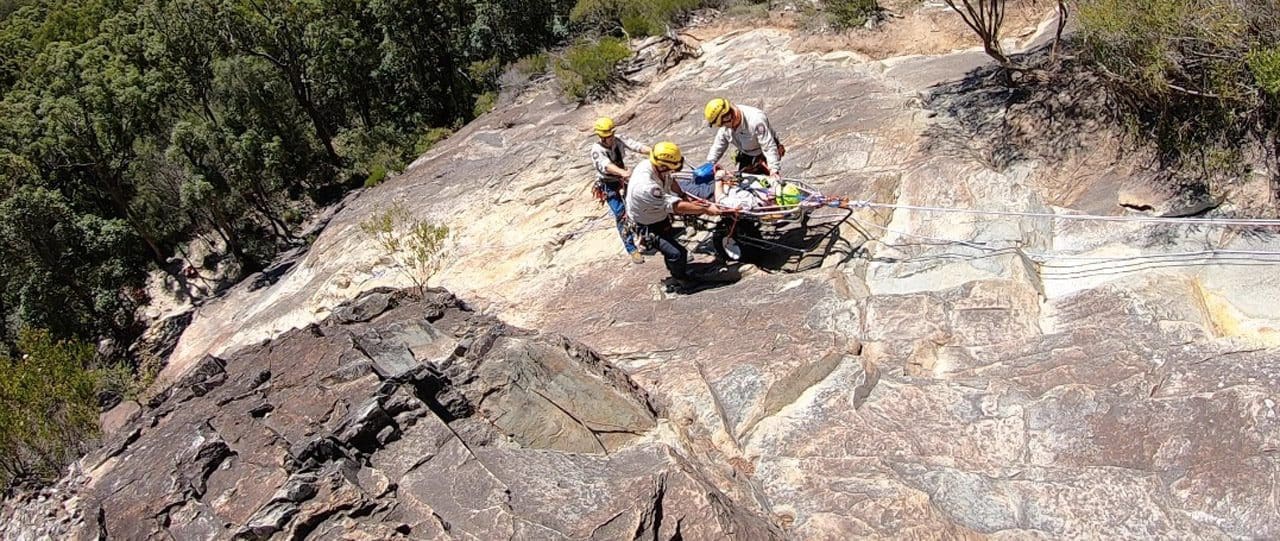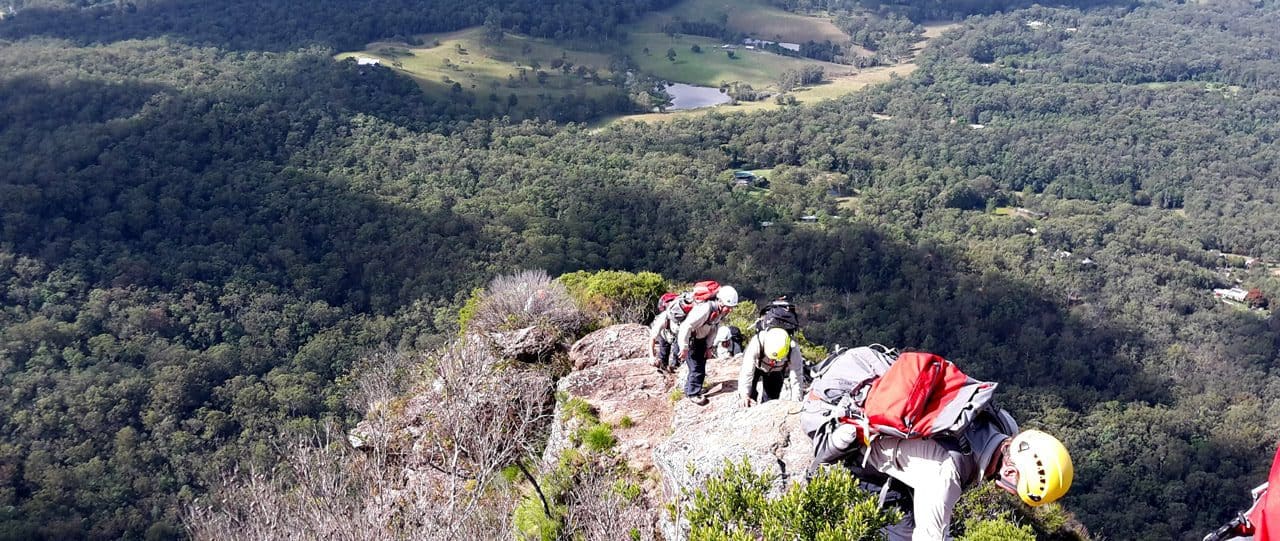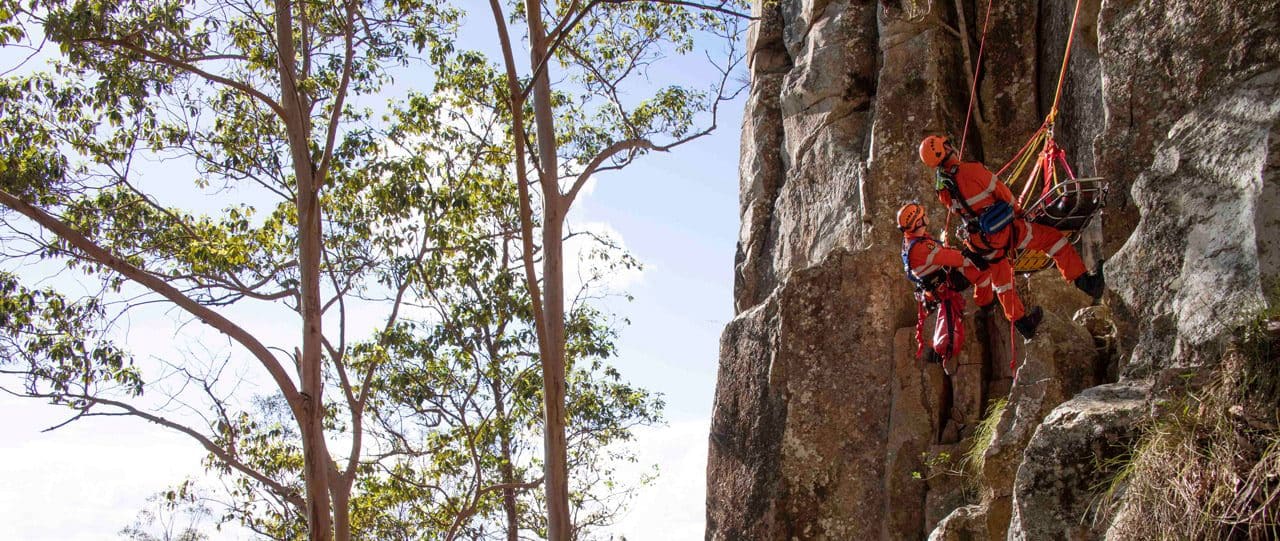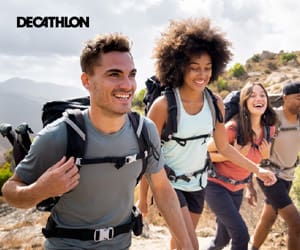Don’t make your next hike your last
I’ve been bushwalking most of my life and I prepare for every hike as if it’s my first. If I don’t, it might well be my last. There’s no high better than drinking in our jaw-dropping island nation. Its rugged beauty, its remoteness and its danger are breath-taking. Perfect for an Insta or FB. But it’s also bloody dangerous. I’ve seen the desperation of family and friends waiting for news of a loved one missing on a bushwalk. I’ve marvelled at the skills of professional and volunteer emergency crews responding to life and death situations. I know I love hiking, bushwalking, trekking… whatever you want to call it and so do an ever-increasing number of Aussies. But I also know this. If I put my life in danger by being ill-prepared, I also put scores of others at risk. You don’t hand your car keys to someone who’s never driven. You can’t SCUBA-dive without certification. Why then are so many of us heading into the great unknown without basic information and easily accessible equipment?
Every day our emergency services risk their lives for at least one bush rescue. Frustratingly, they’re often called back to the same location on the same day to save ill-prepared hikers, heading out into the bush without preparation, phone in hand and without a care in the world.

Here’s a few recent emergencies and tragedies;
All from the last few months of 2020
- Victoria – four deaths in four months
- Mount Augustus, WA – three deaths in three days
- Bluff Knoll, WA – multiple rescues, even after calls for hikers to take safety more seriously
- Bungonia National Park, NSW – 17 bushwalkers rescued
- Bald Head, WA – multiple rescues and deaths
- Lerderderg Gorge, VIC – crews searching for two missing parties came across a third
- Leven Canyon, TAS – a group rescued after being ill-equipped for the hike
- Queenstown, TAS – a hiker rescued after losing their phone containing maps
Last year (2019) State Emergency Service (SES) Queensland volunteers completed more than 11,600 hours on Land Search, Special and Vertical Rescue operations. That’s more than 483 days! The North Coast Region Fire and Rescue Service (FRS) performed 33 remote area rescues.
Every state and territory has similar and shocking rescue figures, and to borrow a phrase from the PM, “How good are our professional and volunteer emergency services?”
But as much as I admire them, their heroics are not always necessary. What is necessary, is for anyone on a hike to take personal responsibility.
I’ve organised hikes for one of the nation’s largest hiking groups for seven years and frankly feel a combination of anger and amazement when some people turn up ill-prepared. This has included;
- No navigation aids – map, compass, or GPS
- Relying on smartphones for navigation. (Coverage is not guaranteed: batteries go flat, phones can be lost or damaged)
- Hiking in thongs!
- Wearing denim jeans on a day-long hike
- Carrying 600ml of water. (You need a minimum of 250ml every 45mins)
- No jacket even though it’s already cold and wet
- No tent fly on an alpine winter hike. These keep you alive!
- Heading out with broken backpacks on multi-day hikes
- No stove for meals on overnight hikes
I’ve sworn under my breath, bitten my tongue and thought, “I know this might be because you’re new to hiking… but really? Really?”

Planning is the key to your survival in the Aussie bush… and snapping that awe-inspiring pic.
I urge anyone with a passion to explore, to stop and take a moment to consider the challenge. Prepare for the worst, ‘walk safe’ and ‘leave no trace‘. Never take your safety for granted.
Keep to the tracks. Environmental damage aside, you put your life at risk. My question to thrill-seeking snappers is simple, “Is your life worth one like on social media?”
The gear you need varies from a two hour stroll to a two week trek, but the principles are the same; plan, plan, plan.
You don’t need to put aside 10 hours for every walk, but you must consider the length, difficulty and remoteness of your hike. As a rule of thumb, I reckon 20 percent is about right. You need at least 24 minutes to plan a two hour walk or three hours minimum for an overnighter.
Here are the basics;
- Avoid hiking alone. A minimum group of three is safest
- Consider the fitness, medical issues, experience, and skill of your group
- It sounds cruel but who is your weakest link and who overestimates their capabilities?
- Select an appropriate hike grade. (One is easy. Five is for veterans.)
- Research your hike using current maps and expert advice. A geo-tagged photo on Insta is not research!
- Calculate how long the hike will take based on length, group size, terrain, and grade
- Consider the navigation skills required. Learn how to read a map and use compass and always carry them
- Understand your environment, the season and associated risks
- Play out emergency scenarios from a headache or twisted ankle to the worst case health scenario
- Know how to access local emergency response via phone and/or radio
- Power down or safe-mode your phone to conserve your battery
- Do not rely on your smartphone for navigation or expect you’ll have reception. Batteries go flat, phones break or can be lost
- To save your phone battery consider a separate camera to capture those social media shots
- Carry essential survival items
- Don’t attempt to hike if the trail is closed
- Remain on marked trails to reduce your impact and chances of getting lost
- Leave no trace – what you take in, take back out
- Check current weather reports but do not rely on them. Conditions change rapidly and to extremes, often contrary to forecasts
- Pack extra food, water, clothing, and equipment
- Abort if the forecast looks bad. Heatwaves, bushfires, floods, extreme wind, or extreme cold increase your risk
- Carry a separate light source (not your mobile phone) to aid search and rescue, particularly from the air
- Leave a copy of your hike plan and map in your vehicle and with a reliable contact. Always notify this person if you change your plans, and when you return
- If you don’t have a personal locator beacon (PLB), get one. If you do have one, make sure it’s registered and register your intentions on all remote hikes. PLBs should only be activated if your emergency warrants extraction. A PLB is not a get out of jail free card
- Do you need other communication aids such as a Sat phone, Explorer or spot device?

Okay I’ve been dancing around the big one but let’s go there… Always ask the question, “How could I die?”
Losing my life on a hike is always at the back of my mind because staying alive is the focus of my planning.
I’ve challenged many less experienced hikers while hiking with this question, ‘If your phone went dead, would you know where you are and how to get back to your car?’ I know it sounds cruel but the reactions have ranged from nonchalance to outright fear when they realise how deadly the situation could be.
Don’t assume your hike leader is competent and prepared. What if they’re injured or separated from the group? What if they over-sold their abilities? What if they died?

How to survive if things don’t go to plan
- Don’t panic! This wastes energy and leads to poor decision making
- Stop, stay calm and think
- Separated from your group? Shout out then wait for a response. Don’t run blindly towards where you think they might be
- Retrace your steps a short distance and see if you can find the trail
- Check your map and try to determine where you are by the contours and your compass. You might need to gain some height for orientation
- If you have no idea where you are, STAY WHERE YOU ARE!
- If you’re in a group ALWAYS STAY TOGETHER! There is safety in numbers and rescue teams don’t need to be searching for multiple groups
- If you have mobile reception, call 000 and ask for police. The international standard emergency number is 112, if you dial this number in Australia you will be treated exactly the same as a 000 call. In areas of marginal coverage SMS can be more reliable than voice, but 000 does not accept SMS messages. If SMS is the only way you seem to be able to connect, then you will have to SMS a friend and get them to call 000 for you.
- If you have a Spot, InReach or satellite communication device, active your emergency response.
- Make a cuppa to help you relax (there’s a teabag in your survival kit)
- Make your position visible to rescue teams by placing bright items (pack cover, bright clothing etc.) in an open and clearly visible area
- If you believe your life is at risk, activate your personal locator beacon (PLB)
- It can take time for rescuers to reach you, so your priority is to find or build a shelter to keep warm and dry. Remember to remain visible.
- Find a water source if it’s safe to do so and ration your food and water if necessary.
Be aware of your limitations and don’t hike beyond your abilities. Use every hike as an opportunity to develop your skills and knowledge. You can learn something new every time you pull on your boots. I have plenty of “wish list” hikes and I’m still developing my skills on shorter or similar hikes to one day tackle each of them.
Aussie bushwalking’s been forged through passionate and well informed clubs… why don’t you consider joining one of them?
However you tackle the bush, here’s my simple plea; plan and don’t put your life or others at risk. It’d be a damn shame to miss out on your next big hike.
SES Walk Warning
In early November 2021 I was involved in a search and rescue of missing hikers as an SES volunteer. Unfortunately while searching I lost my footing and was badly injured and had to spend two days in hospital. Fortunately we were able to locate the hikers and walked them out to safety before I was taken by ambulance to hospital. I am sharing this as it highlights the need to ensure you protect your life through proper planning and preparation and don’t put other peoples lives at risk.
Images of SES volunteers and FRS firefighters training courtesy of Queensland Fire and Emergency Services.
About the author
Darren Edwards has been a keen bushwalker for more than a decade. He’s the founder of Trail Hiking Australia, a community project delivering free online resources to more than 80,000 members. Darren’s a graphic designer by trade but loves nothing more than shutting down his computer, pulling on the boots and venturing into our amazing wilderness.











